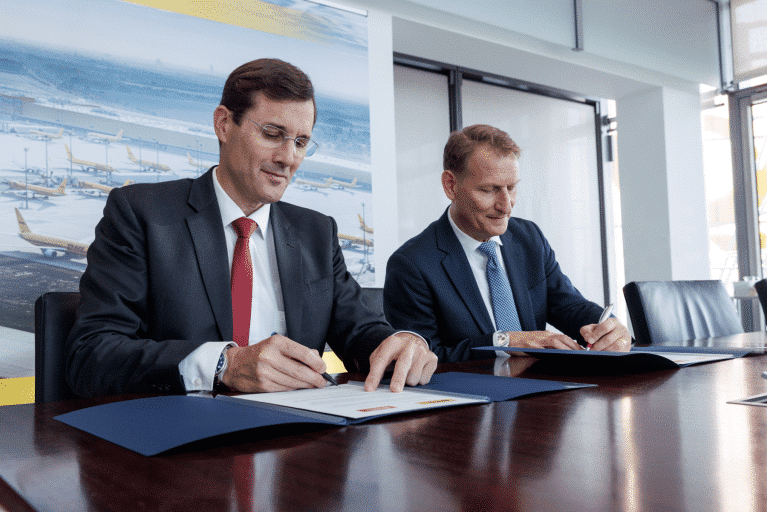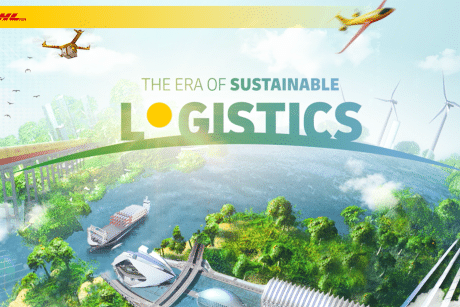Sustainable Aviation Fuel Certificates
DHL Express and World Energy have joined forces to speed up the decarbonization of aviation logistics. We have signed a seven-year strategic agreement to purchase approximately 668 million liters of Sustainable Aviation Fuel (SAF) through sustainable aviation fuel certificates (SAFc). This is one of the largest SAFc agreements in the aviation industry so far. We expect this partnership to reduce carbon dioxide emissions by approximately 1.7 million tonnes over the lifecycle of aviation fuel. This is equivalent to operating DHL’s Americas aviation network carbon neutrally for one year.
The use of SAFc will play a vital role in our journey towards achieving our ambitious emissions targets. We aim to reduce our annual greenhouse gas emissions below 29 million tonnes CO2e by 2030 across scopes 1, 2, and 3.*
Transparent and Accountabe
The “Book & Claim” chain-of-custody model separates environmental attributes from fuel using SAFc. This approach ensures that a third party accurately transfers and verifies emission reductions associated with each credit, enhancing transparency and accountability. It allows us to purchase Sustainable Aviation Fuel Certificates, utilize associated emission reductions, and extend environmental attributes to customers through our GoGreen Plus service.
All volumes will be traced through an independent registry. This is to ensure traceability claims related to SAFc meet rigorous sustainability certification standards from Roundtable on Sustainable Biomaterials (RSB).
This partnership shows how companies can work together towards decarbonizing hard-to-abate sectors like aviation logistics while meeting their climate goals responsibly.
*We use scopes 1, 2, and 3 as categories to measure greenhouse gas emissions in an organization’s carbon footprint. Here is a brief explanation of each scope:
- Scope 1: Direct emissions from sources that are owned or controlled by the organization. This includes emissions from combustion of fuels in boilers, furnaces, vehicles, etc.
- Scope 2: Indirect emissions from the consumption of purchased electricity, heat or steam generated offsite but consumed by the organization.
- Scope 3: Indirect upstream and downstream emissions associated with an organization’s activities but occur outside its own operational control. This can include transportation and distribution of products/services (upstream) as well as use/disposal of sold products (downstream).
Scope 3 often represents the largest portion of an organization’s carbon footprint. This is because it covers all indirect impacts across their value chain.


